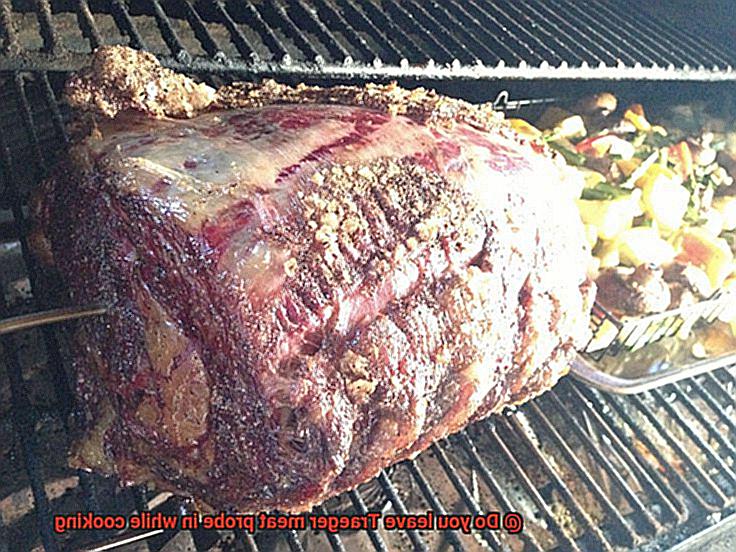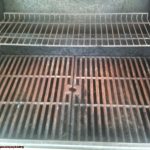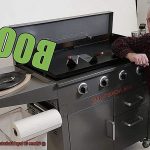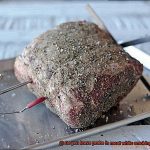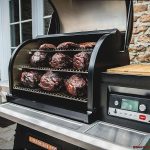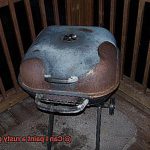As a BBQ aficionado, you know that nailing the perfect temperature is crucial for mouth-watering meat. That’s why Traeger owners often ask themselves, “Should I leave the meat probe in while cooking?” With so many conflicting opinions and information out there, it can be tough to figure out what’s best.
If you’re new to using a Traeger meat probe, you might wonder what all the fuss is about. Essentially, it’s an electronic thermometer that lets you keep tabs on your meat’s internal temperature as it cooks. Using a probe is one of the most reliable ways to ensure that your meat is cooked through without being overdone or undercooked.
But here’s where things get tricky – should you leave the probe in throughout the entire cooking process? Some people swear by it, while others argue that removing it after a certain amount of time is better. And don’t even get us started on how different meats require different approaches.
So, what’s the verdict? In this post, we’ll dive deep into whether or not you should leave your Traeger meat probe in while cooking. We’ll weigh up all the pros and cons of both methods, explore what factors influence this decision, and give some guidance on how to cook your perfect cut of meat with confidence.
Contents
What is a Traeger Grill?
What sets them apart from other grills is their use of wood pellets as fuel, which infuses a distinct flavor into your food that’s hard to resist. But what really makes Traeger Grills stand out is the meat probe that comes with them.
The meat probe is a handy tool that allows you to monitor the internal temperature of your meat while it’s cooking. This ensures that your meat is cooked to perfection, whether you prefer rare or well-done. The probe is inserted into the meat and provides a real-time temperature reading, making it easy to keep an eye on the cooking process without having to open the grill and risk losing heat.
However, the question on many grill enthusiasts’ minds is whether or not to leave the meat probe in while cooking. If you’re cooking a larger cut of meat – like a brisket or pork shoulder – leaving the probe in can be very helpful. This allows you to keep a constant eye on the internal temperature of the meat without having to open the grill and risk losing heat. Plus, Traeger Grills come with a digital controller that makes it easy to monitor and adjust the temperature while cooking.
But there are some downsides to leaving the probe in while cooking. For example, if you’re cooking smaller cuts of meat – like a steak or chicken breast – the probe may interfere with your ability to get a good sear on the outside of the meat. Additionally, leaving the probe in can sometimes lead to uneven cooking, as the area around the probe may cook faster than other parts of the meat.
Ultimately, whether or not to leave the meat probe in while cooking is up to personal preference. If you’re cooking a larger cut of meat and want to monitor the temperature closely, leaving the probe in can be helpful. However, if you’re cooking smaller cuts or prefer not to have any interference with your searing process, it may be best to remove the probe and use an instant-read thermometer instead.
What is the Meat Probe?
As any grill master knows, cooking the perfect steak or brisket is an art form. Achieving that ideal flavor and texture can be a real challenge, but thankfully, there’s a tool that can help: the meat probe.
A meat probe is a device that allows you to monitor the internal temperature of your meat while it cooks. Essentially, it’s a long, thin metal rod that you insert into your meat. This rod is then connected to a digital thermometer that displays the temperature on a screen outside the grill.
The Traeger meat probe is an advanced version of this tool, specifically designed for use with Traeger grills. It’s an essential accessory for any serious griller looking to achieve perfectly cooked meats on their Traeger grill.
Using a meat probe allows you to ensure that your meat cooks evenly and reaches the desired level of doneness. This is especially important for larger cuts of meat like roasts or briskets, where accurate temperature monitoring is key.
One of the biggest advantages of using the Traeger meat probe is that it eliminates the need to constantly open the grill and check on your meat’s progress. This helps maintain a consistent cooking temperature and prevents your meat from drying out or becoming overdone.
It’s worth noting that not all meats require the use of a meat probe. For example, if you’re grilling hamburgers or hot dogs, you can visually check their doneness by looking at their color and consistency.
Advantages of Leaving the Meat Probe in While Cooking
Using a meat probe is the solution. But the question remains: should you leave the meat probe in while cooking? As an expert, I am here to tell you that leaving the meat probe in has several advantages.
Firstly, leaving the meat probe in allows you to monitor the temperature of your meat without disturbing the cooking process. When smoking meat, opening the smoker often can cause temperature fluctuations and affect the cooking time. By leaving the meat probe in, you can keep track of the temperature without compromising the cooking process’s integrity.
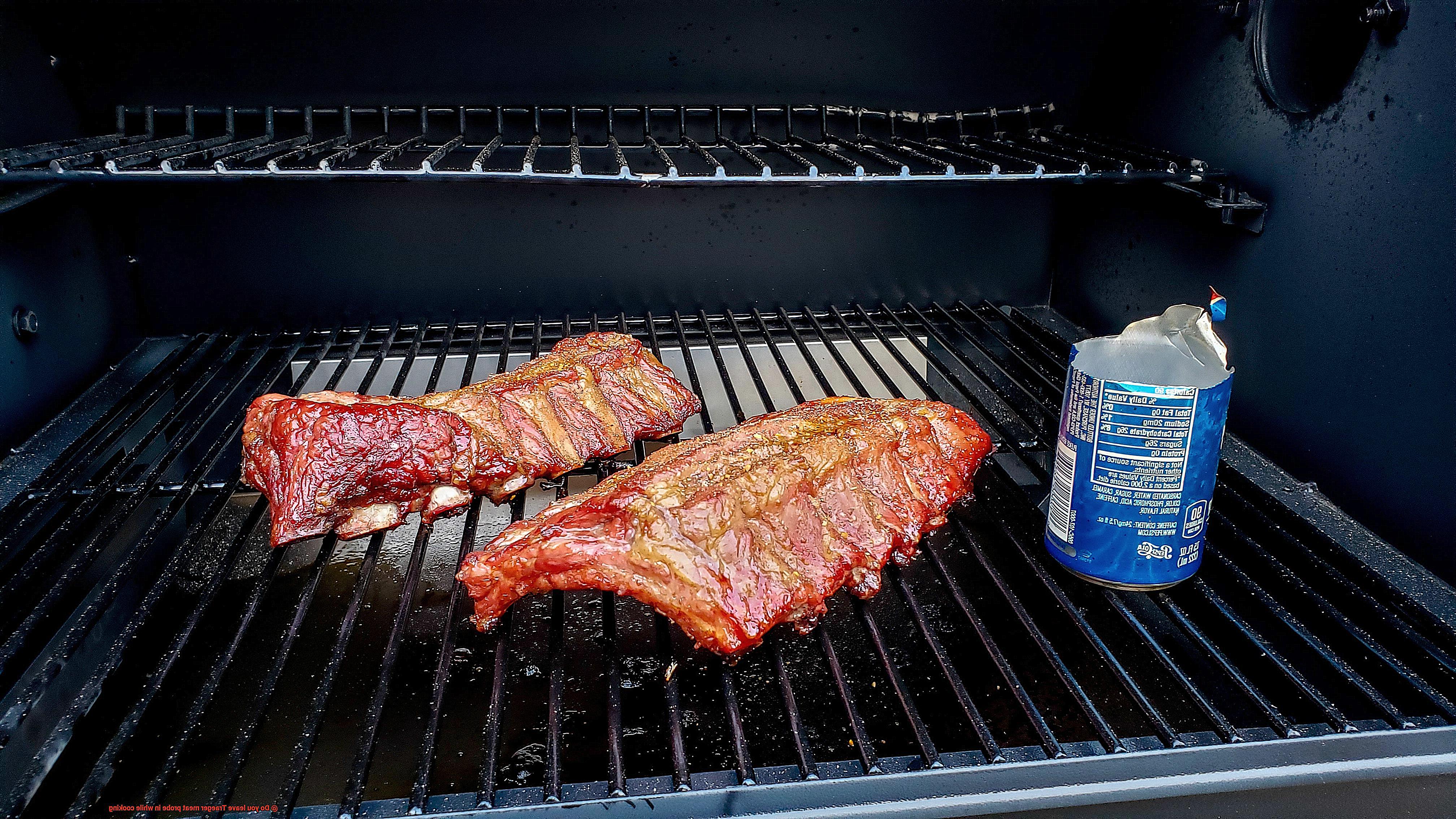
Secondly, leaving the meat probe in helps achieve consistent results every time. Different cuts of meat require different cooking times and temperatures. By closely monitoring these variables with a meat probe, you can set your desired temperature and adjust your cooking accordingly. This ensures that your meat turns out perfectly every time.
Thirdly, leaving the meat probe in prevents overcooking or undercooking your meat. Overcooking can make it tough and dry, while undercooking can be dangerous to eat. By monitoring the internal temperature with a meat probe, you can remove the meat from the grill or smoker at precisely the right time.
Lastly, leaving the meat probe in while cooking saves time and allows you to multitask. Instead of constantly checking on your meat, focus on other tasks while still monitoring its progress. This is particularly useful when hosting a barbecue or other event and have multiple dishes to prepare.
Disadvantages of Leaving the Meat Probe in While Cooking
While leaving the probe in may seem like a convenient option, it can have some significant disadvantages. As an expert on this topic, let me walk you through some of the potential pitfalls.
Firstly, leaving the probe in can create a hole in the meat, causing it to lose its natural juices and become dry. This can result in a less flavorful end product – something no one wants. So, if you’re looking for juicy and mouth-watering meat, it’s best to avoid leaving the probe in.
In addition to dry meat, leaving the probe in can also lead to inaccurate readings. If inserted incorrectly or in contact with bone or fat, the probe can give you an incorrect temperature reading. This can lead to overcooked or undercooked meat, which is not only disappointing but can also be dangerous.
Leaving the probe in can also cause cross-contamination. The probe can get dirty and contaminated with bacteria which can then transfer to other parts of the meat, especially if you are cooking different types of meat at once. This can cause foodborne illnesses and ruin your entire meal.
Finally, leaving the probe in while cooking can be hazardous if you’re not careful. The probe can get hot and accidentally touching it or knocking it over could result in burns or even a fire.
In conclusion, while using a meat probe can be helpful, it’s important to consider the potential disadvantages before leaving it in while cooking. Here are some points to keep in mind:
- Remove the probe periodically to check the temperature rather than risking dry or contaminated meat.
- Ensure that the probe is inserted correctly and isn’t touching bone or fat.
- Clean your probe thoroughly before and after each use to prevent contamination.
- Be cautious when handling a hot probe and avoid any accidents.
Alternatives to Using the Meat Probe While Cooking
Whether you don’t have one or prefer not to use it, there are alternative methods that can help you achieve perfectly cooked meats.
One option is the touch test. With some practice, this method can be quite accurate. When pressing on the meat, a well-done steak will feel firm with little give, while a rare steak will feel soft and squishy.
Another alternative is the visual test. By cutting into the meat, you can inspect the color of the juices that come out. Clear juices indicate that the meat is likely still raw or rare, pink or red juices indicate medium-rare to medium, and brown juices indicate well-done.
If you prefer a more structured approach, you can also estimate cooking time using a timer based on the weight of the meat and your desired level of doneness. While this method may require trial and error, it can still produce great results.
In addition to these methods, keep in mind that certain cuts of meat have different textures and will require different cooking times and techniques. For example, a brisket will need to be cooked low and slow for several hours, while a steak can be seared quickly over high heat.
Tips for Using a Meat Probe Safely and Effectively
When it comes to cooking meat, using a meat probe can be a game-changer. Not only does it help you achieve perfectly cooked meats every time, but it also ensures that your meats are safe to eat. To use a meat probe safely and effectively, here are five essential tips to follow:
Keep it clean
Before and after each use, wash your meat probe thoroughly with warm soapy water or a sanitizing solution. This will help prevent the growth of harmful bacteria that can cause food poisoning.
Insert it correctly
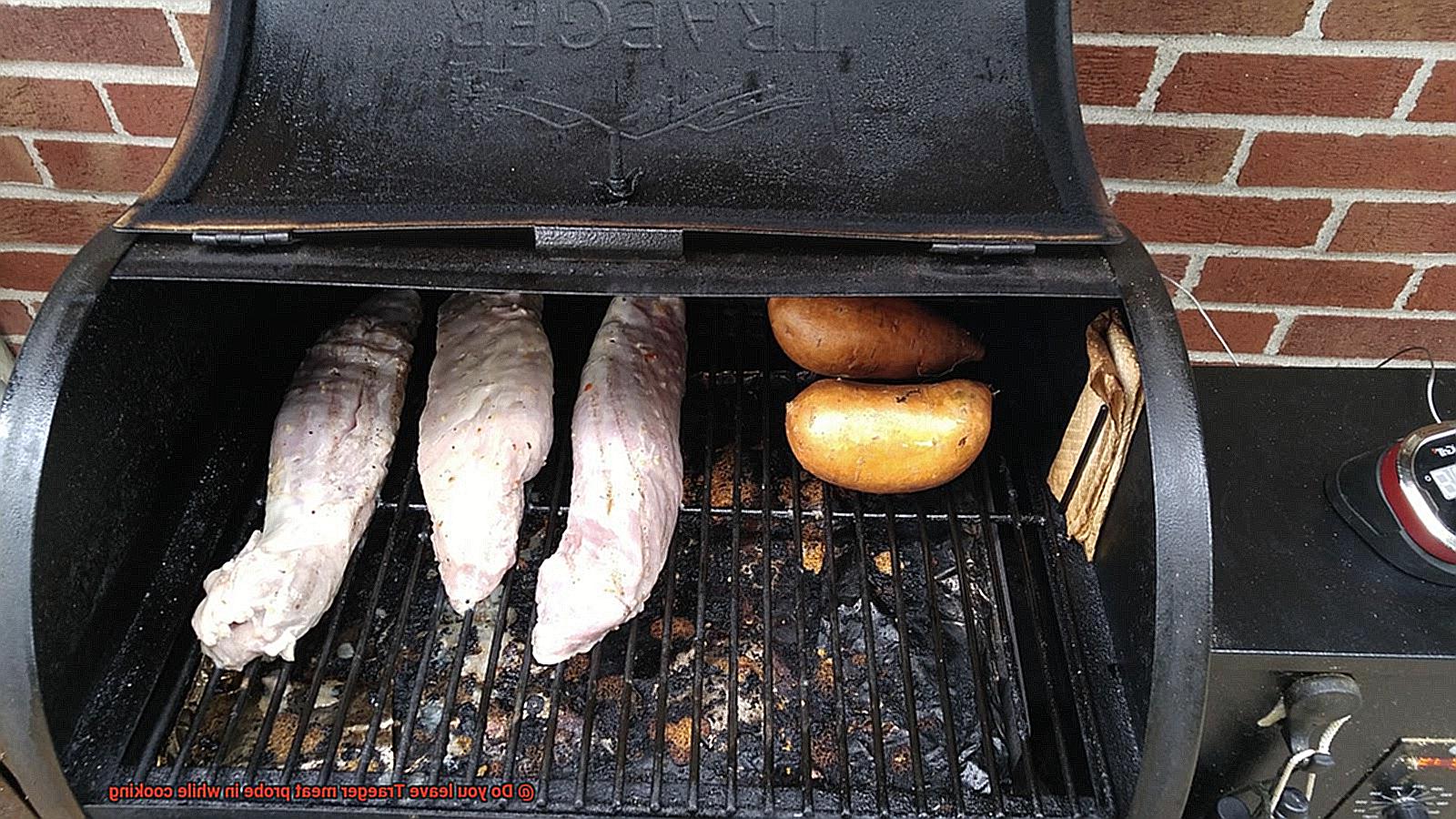
When inserting the probe into the meat, make sure it is in the thickest part of the meat without touching any bones or gristle. This will give you an accurate reading of the internal temperature and prevent any potential contamination from bones or cartilage.
Secure it properly
If leaving the probe in while cooking, make sure it is securely attached to the grill or smoker and not interfering with any moving parts. This will prevent accidents and ensure accurate readings without having to open the grill or smoker frequently.
Know its limits
It’s important to be aware of the temperature range of your meat probe. Some probes have a maximum temperature limit that should not be exceeded, as this could damage the probe or give inaccurate readings. This is particularly important when cooking at high temperatures.
Sync it up
If using a wireless meat probe, make sure the receiver is within range of the transmitter and that they are both turned on and synced up properly before starting to cook. This will ensure that you receive accurate readings throughout the cooking process without any interruptions.
RvDPJ1SI-XY” >
Also Read: Can I leave my Traeger meat probe in while cooking?
Conclusion
In the end, the choice of whether or not to leave your Traeger meat probe in while cooking is a matter of personal preference and depends on the type of meat you’re preparing.
While leaving it in can offer consistent temperature monitoring and save time, it may also result in dry or contaminated meat and inaccurate readings if not handled correctly. Fortunately, there are alternative methods such as touch tests, visual assessments, and weight-based cooking times that can produce excellent results.
To use a meat probe safely and effectively, it’s critical to keep it clean, insert it properly, secure it firmly, understand its limitations, and synchronize it if using a wireless probe. By following these guidelines and considering all aspects of using a meat probe with your Traeger grill, you’ll be able to achieve flawlessly cooked meats every time without compromising safety or flavor.
So why not experiment with various techniques until you discover what works best for you?

